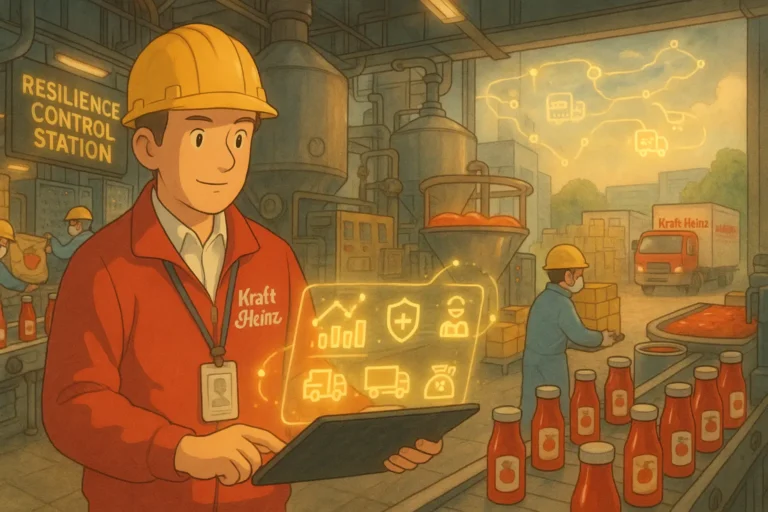
How prepared is your supply chain management to survive an unexpected crisis such as a natural disaster?
Let’s bring it closer to home. There are hundreds of millions of businesses across the globe. How many of them do you think escaped the impact of the pandemic unscathed?
There have been five successful coups in Africa in the last four years, throwing the affected countries into chaos.
Sudan is still in the middle of a civil war. How do you think the supply chains in these regions are fairing?
What is my point? Crises are bound to happen, and the effects could be far-reaching, so much so that your supply chain may be unable to survive them.
This is why your supply chain needs a crisis management plan. But what exactly is it?
What is a Crisis Management Plan?
A crisis management plan is a strategy documentation detailing how a business or its supply chain will respond to a crisis should it occur.
The crisis in this scenario is any situation or event that threatens to jeopardise your supply chain operations. It could disrupt or negatively impact the supply chain’s profitability.
A crisis could be external or internal, but the impact will almost certainly be detrimental to the supply chain.
Four types of crises could happen to your supply chain: Financial, economic, political, and technological.
With a crisis management plan, every stakeholder associated with your supply chain knows how to respond should the organization be plunged into a crisis. It doesn’t matter what the crisis is.
Why is a Crisis Management Plan Important for your Supply Chain?
Although we have established that the crisis management plan helps the supply chain carry on when there is a crisis, there are a few other things it does as well.
Quick Response
Time is always important and much more important in the wake of a crisis. With a properly documented crisis plan, stakeholders can move swiftly to minimize the impact of any crisis.
Ensuring a quick response time would help stop the bleeding and give the supply chain the boost to persevere.
Continuity
Your supply chain’s continuity is very important if the business will have any chance of survival.
A crisis management plan helps to identify alternative options for suppliers, logistic routes, and resources (financial or otherwise).
With these in place, the supply chain can continue even in adverse conditions.
Threat Mitigation
If your supply chain is in crisis, it is usually because there is a threat to the existence of the systems in place.
A crisis management plan empowers all relevant stakeholders to take proactive actions to help limit or mitigate the impact of the threat to the system.
Communication
It is easier to survive a crisis if effective communication is in place.
This necessitates an adequate description of communication channels and protocols, ensuring that information flows efficiently between all stakeholders (internal and external) in the supply chain management.
Resource Allocation
A crisis management plan outlines the allocation of resources and responsibilities to the various facets and players in the supply chain.
With these, there will be clarity on the leadership roles, what to do, and the necessary funding to get it done.
Factors that Help Prepare a Good Supply Chain Crisis Management Plan
To create a good crisis management plan for your supply chain, there are factors to consider, especially when you are unsure of the nature of the crisis you are preparing for.
Relevant Stakeholders
Not all stakeholders will be a part of your crisis management plan, but the ones that will be there are probably very critical to the survival of your supply chains.
Identify these stakeholders and ensure they have the necessary preparation should the crisis occur. The preparation could be through training and seminars.
Leadership
Your supply chain will need strong leadership during a crisis, yet not everyone can lead it.
Create a leadership structure that ensures everyone understands who is in charge and ensures the leadership is well-equipped.
Communication
A good crisis management plan must be communicated to all stakeholders. It should be easy to understand. It should also clearly state how information will flow during the crisis.
Resources
You want to ensure your supply chain and business has the right resources to carry on during a crisis.
Without the necessary resources, your supply chain will struggle to survive and perform, which could lead to downtimes and disruptions.
How to Prepare a Supply Chain Crisis Management Plan
Creating a crisis management plan entails documenting the necessary procedures and activities that would be triggered in the event of a crisis.
In this section, we explore how to prepare one.
Step 1: Risk Assessment
You cannot prepare for crisis management without identifying the potential risks in your supply chain management, especially because they would only be amplified during a crisis.
Potential risks to watch out for include regulatory issues, supplier disruptions, and lack of finance.
When setting up your crisis management plan, it is important to prioritize your risks based on their degree of impact on the supply chain.
Step 2: Find a Way Out
If you have done the risk assessment well, then you know the potential risks your supply chain faces.
The next step is to find a way out or find and secure alternative options for your supply chain that would serve as placeholders should the crisis occur.
These placeholders could be local suppliers, alternative financing options, or routes to ensure your supply chain continues uninterrupted.
Step 3: Create a Crisis Management Team
The crisis management team would comprise your senior executives and stakeholders from different arms of the supply chain.
The team will serve as the command centre should a crisis happen, and they will be responsible for leading the supply chain out of the crisis with little to no damage.
Each team member should have clear roles and responsibilities that match their strengths. These will help ensure a coordinated and efficient response during the crisis.
Step 4: Factor in the Resources Needed
Resources are a big deal; your crisis management team will need the right resources to move things along.
It could be access to credit or loans from a financial partner or access to human capital. Without all these, your supply chain will not survive the crisis.
So many businesses and supply chains suffered during the pandemic because they could not get one or more of these resources.
Whatever the case is, always ensure there are infrastructures, raw materials, financial, and human capital in place to facilitate easy transition from the crisis.
Step 5: Communication Channels
The world used to run on gold, the dollar, and then oil. However, now it runs on information, and it will come in handy for your supply chain during a crisis.
Communicating information in your supply chain ensures every stakeholder knows what to do during the crisis. This is a vital tool for your management team.
With the right communication channels in place, information can flow with ease and get to the right people, ensuring things move along.
A well-managed flow of communication will get people working together seamlessly, and it will help save the business and supply chain’s reputation.
FAQ’s on Supply Chain Crisis Management
Q1: How can I evaluate the effectiveness of my supply chain’s crisis management strategy?
You may evaluate the plan’s effectiveness frequently through testing, drills, and simulations.
These procedures are improved, holes in the system are found, and duties are understood by all parties involved.
Q2: How does communication fit into my supply chain’s crisis management strategy?
It’s important to communicate for information to flow.
A communication strategy outlining how information will be shared internally and externally, keeping stakeholders informed and updated, should be included in the plan.
Question 3: How can I find potential risks and weaknesses in my supply chain?
In order to detect vulnerabilities, risk assessments look at historical data, run scenario studies, and take into account things like supplier dependencies, travel routes, and regulatory changes.

Obinabo Tochukwu Tabansi is a supply chain digital writer (Content writer & Ghostwriter) helping professionals and business owners across Africa learn from real-world supply chain wins and setbacks and apply proven strategies to their own operations. He also crafts social content for logistics and supply chain companies, turning their solutions and insights into engaging posts that drive visibility and trust.








